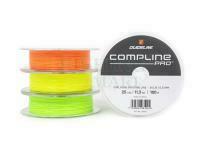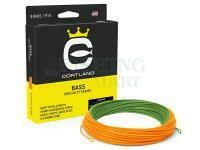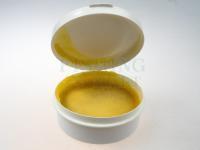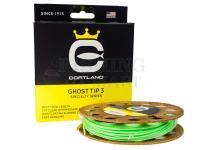Fly Lines
Cortland All Purpose XP
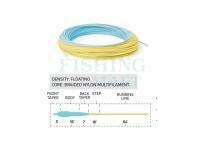
The All Purpose XP is designed to load quick, punch air resi...
Prices from
109.95 €
Cortland Euro Mono Core

New 2025!
The Euro Mono Core Level fly lines are ideal for all euro an...
Prices from
64.95 €
Cortland Versatile Euro DT
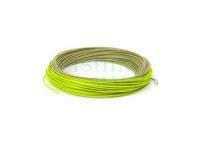
New 2025!
The Versatile Euro was designed for anglers wanting to rely...
Prices from
64.95 €
Cortland Euro Braid Core
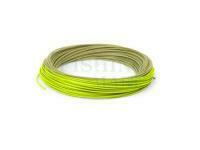
New 2025!
The Euro Braid Core fly lines are ideal for all euro and mod...
Prices from
64.95 €
Cortland Headwater
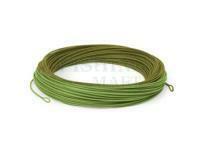
New 2025!
The Headwater was designed for accurate, subtle presentation...
Prices from
99.95 €
Guideline Bullet+ WF
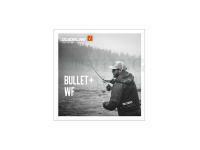
New 2025!
Your choice for Streamer-, Sea Trout- or Salmon fishing with...
Prices from
90.91 €
Cortland Level Sinking Line
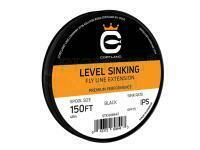
Cortland's Level Sinking line is designed for shooting heads...
Prices from
99.99 €
Guideline Single Hand Scandi WF
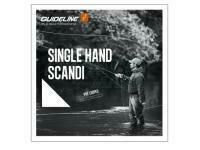
Single Hand Scandi is our dedicated spey line for for both T...
Prices from
89.99 €
Guideline Brook WF
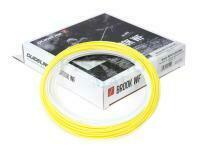
The Brook WF is the small stream specialist line that makes...
Prices from
89.99 €
Guideline Highwater Classic WF
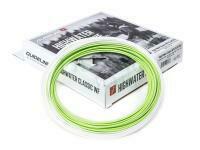
Highwater Classic is a long belly floating line for technica...
Prices from
89.99 €
Cortland 444 Classic SL
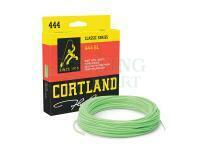
Cortland’s SL (specialized line) has remained a staple versa...
Prices from
74.99 €
Cortland Streamer Intermediate Tip
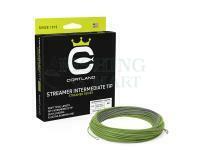
The Streamer Intermediate Tip is designed to effectively fis...
Prices from
99.95 €
Cortland Cold Salt Series Clear Tip

The Cold Salt Series Clear Tip is designed for targeting fis...
Prices from
109.95 €
Cortland Bass Intermediate
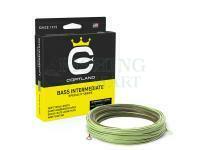
The Specialty Series Bass Intermediate was designed to cover...
Prices from
99.95 €
Guideline Experience+ WF
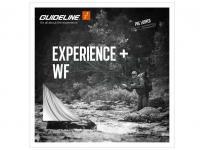
Experience+ is designed to be a line for all kinds of fishin...
Prices from
63.40 €
Guideline 4 Cast+ WF
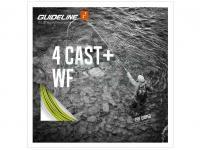
4 Cast is a true classic in the Guideline WF-line range and...
Prices from
67.46 €
Guideline LPS / Euro WF
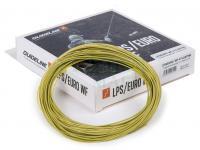
The perfect weapon for versatile and efficient fishing with...
Prices from
81.10 €
Guideline Fario CDC DT
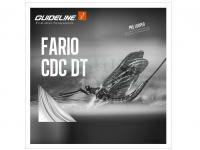
A quiet and delicate Double Taper (DT) line for tactical fis...
Prices from
59.99 €
Guideline Presentation+ WF
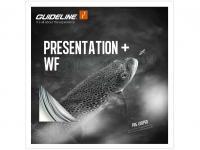
On this new generation of the line called Presentation+, we...
Prices from
67.94 €
Cortland Trout Series Indicator

The Trout Series Indicator features our new High Float Tip t...
Prices from
70.81 €
Guideline Fly lines Fario CDC WF
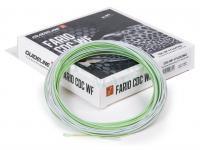
Quiet, delicate and a generator of laser-sharp loops, this l...
Prices from
82.06 €
Guideline Predator Evolve
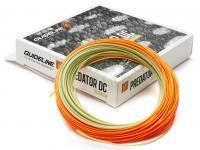
A series of lines developed for use together with large stre...
Prices from
112.68 €
Cortland Fly lines Pike Musky Sink 4
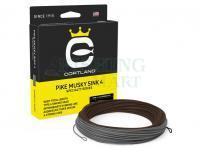
The Specialty Series Pike Musky Sink 4 is our most versatile...
Prices from
121.29 €
Cortland Fly lines Pike Musky Intermediate
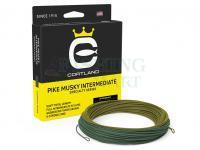
The Specialty Series Pike Musky Intermediate presents large...
Prices from
63.64 €
Cortland Fly lines Pike Musky Float
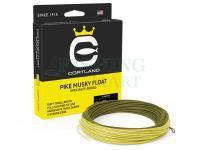
The Specialty Series Pike Musky Intermediate presents large...
Prices from
119.62 €
Cortland Fly lines 444 Sylk WF
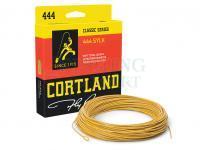
Cortland’s 444 Sylk is the first modern line designed for fi...
Prices from
74.99 €
Cortland Fly lines 444 Sylk Double Taper
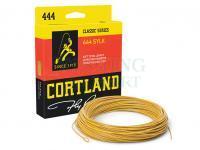
Cortland’s 444 Sylk is the first modern line designed for fi...
Prices from
74.99 €
Cortland Fly lines 444 Clear Camo Intermediate
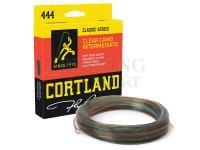
The 444 Clear Camo line disguises itself extremely well in a...
Prices from
74.99 €
Cortland Fly lines 444 Spring Creek
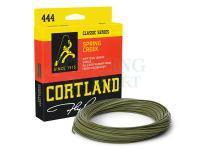
Fly lines Cortland 444 Spring Creek remains supple in the co...
Prices from
74.99 €
Cortland Micron Fly Line Backing
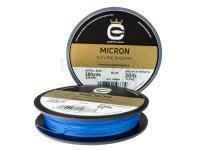
Cortland Micron is the standard by which all fly line backin...
Prices from
13.64 €
Cortland Fly lines Euro Nymph Mono Core
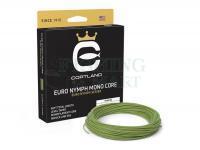
Built with a proven taper and thin, hard monofilament core,...
Prices from
61.24 €
Cortland Fly lines 333 Sinking Tip
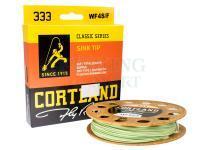
• Supple
• 10ft Type 2 Sinking Tip
• Floating running line...
Prices from
54.99 €
Cortland Fly lines 333 Double Taper Floating
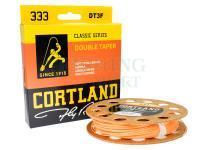
• Supple
• Double Taper
• High Floating
• CORE: BRAIDED N...
Prices from
54.99 €
Cortland Fly lines Fairplay Floating

The Fairplay formulation offers the fly caster increased dis...
Prices from
19.62 €
Cortland Fly lines Trout Boss Trout Series Floating Chartreuse White
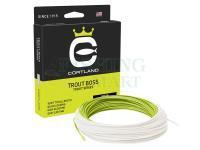
Features a complex new taper, thinner core and our new propr...
Prices from
110.05 €
Cortland Fly lines Speciality Series Ghost Tip 15
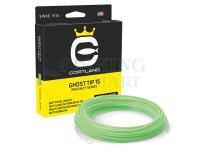
A clear, 15ft intermediate tip line that’s ideal for fishing...
Prices from
110.05 €
Cortland Fly lines Speciality Series Ghost Tip 5
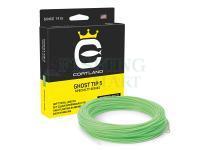
A clear, 5ft intermediate tip Cortland Speciality Series Gho...
Prices from
109.95 €
Cortland Fly lines Competition Series FO-Tech Type 7 Intermediate
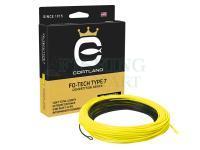
The FO-Tech Type 7 is our fastest sinking distance line. Ide...
Prices from
56.94 €
Floating, Sinking & Intermediate Fly Lines
Fly lines are a very important part of the fly fishing set and you can safely say that when fishing for smaller trout, grayling, the fly line is more important than the reel.
It is with the help of a fly line (which is also commonly called fly lines) having its weight and the right shape that we can use a fly rod to send an artificial fly to the required distance.
The fly lines are selected for the rod and the reel according to the AFTM class and it must always be a complete set, failure to adapt the line to the rod will result in e.g. poor casting properties of the set, or the possibility of breaking the fly rod due to its overload.
Secondly, we can divide them in terms of displacement, and here we distinguish floating and sinking lines. The sinking versions can be divided into sinking speeds, from very slowly sinking intermediate types, which are carried out practically under the very surface (great lines for a wet fly and streamer for fisheries with flowing water, as well as for shallow rivers), to those very fast sinking, e.g. large rivers with raised water - incl. class 6 sinking lines for the Dunajec River.
Fly lines can also be divided according to their shape, the cylindrical lines that started it all, which were forgotten until recently, have returned to favor and are now available to competitors as legal links to competition nymph methods.
The next lines are DT-shaped - that is, the line is tapered on both sides and cylindrical in the middle. DT lines are recommended for a more delicate presentation of a dry fly, nymph or wet fly at shorter distances, because this type of lines does not cast far.
The most popular fly lines today are WF lines and these lines are the farthest. They have a thickened front part of the line (about the first 9 meters) and later have a thin cylindrical long section. Thanks to this shape, when casting, it feels like the front part is pulling the rest. WF lines are recommended wherever you need to throw further.
Of course, there are other types of lines, but the most important ones are described above.
If you have any questions, please contact us.
It is with the help of a fly line (which is also commonly called fly lines) having its weight and the right shape that we can use a fly rod to send an artificial fly to the required distance.
The fly lines are selected for the rod and the reel according to the AFTM class and it must always be a complete set, failure to adapt the line to the rod will result in e.g. poor casting properties of the set, or the possibility of breaking the fly rod due to its overload.
Secondly, we can divide them in terms of displacement, and here we distinguish floating and sinking lines. The sinking versions can be divided into sinking speeds, from very slowly sinking intermediate types, which are carried out practically under the very surface (great lines for a wet fly and streamer for fisheries with flowing water, as well as for shallow rivers), to those very fast sinking, e.g. large rivers with raised water - incl. class 6 sinking lines for the Dunajec River.
Fly lines can also be divided according to their shape, the cylindrical lines that started it all, which were forgotten until recently, have returned to favor and are now available to competitors as legal links to competition nymph methods.
The next lines are DT-shaped - that is, the line is tapered on both sides and cylindrical in the middle. DT lines are recommended for a more delicate presentation of a dry fly, nymph or wet fly at shorter distances, because this type of lines does not cast far.
The most popular fly lines today are WF lines and these lines are the farthest. They have a thickened front part of the line (about the first 9 meters) and later have a thin cylindrical long section. Thanks to this shape, when casting, it feels like the front part is pulling the rest. WF lines are recommended wherever you need to throw further.
Of course, there are other types of lines, but the most important ones are described above.
If you have any questions, please contact us.

